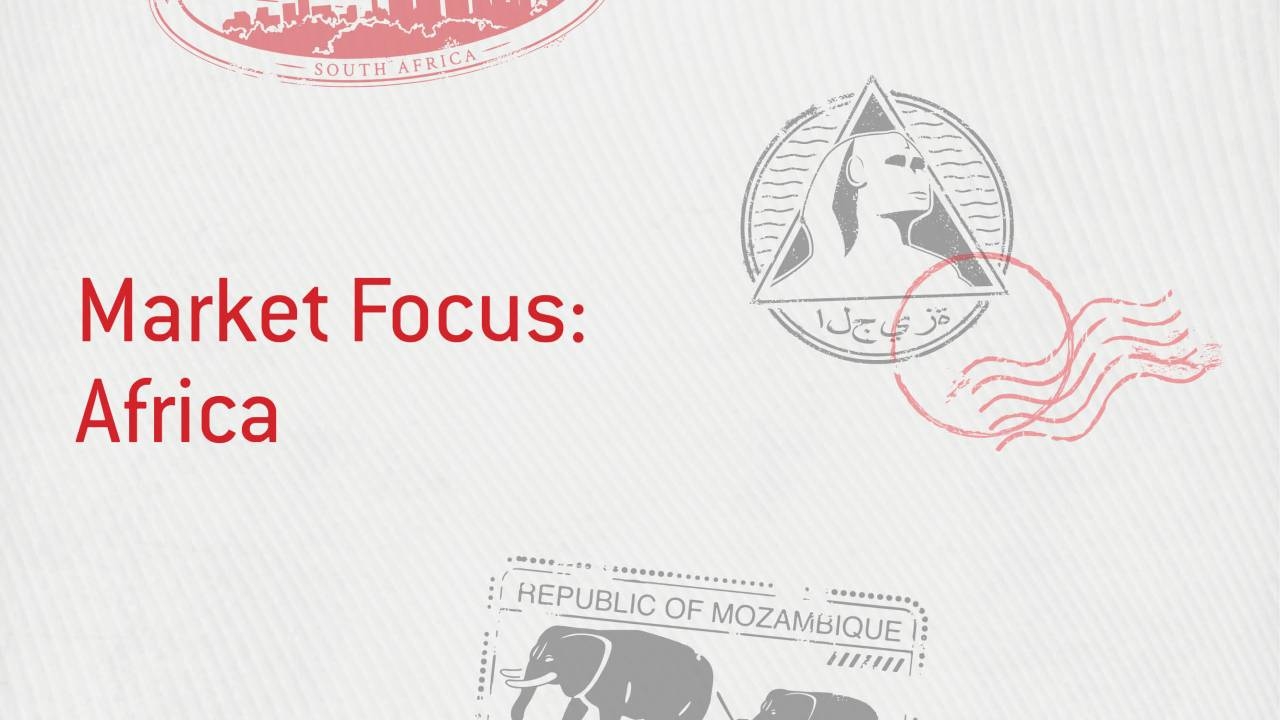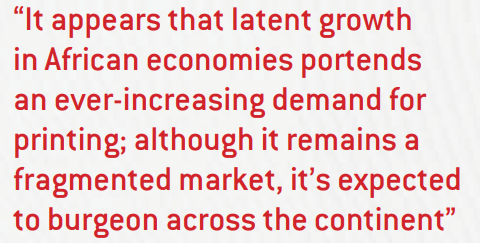Global printers eye Africa
Africa correspondent Gill Loubser outlines some key market developments in the continent

Some 2,000 commercial printing companies are operating throughout Africa, with an additional 1,000 providing prepress or post-press services. Mostly described as SMMEs (small, medium and micro enterprises), their primary focus is on revenue-generating applications, such as packaging, advertising and publishing.
According to the World Bank, six of the world’s 10 fastest growing economies are in Africa. Reflecting these exceptional growth prospects, it’s not surprising to learn that global printing businesses increasingly eye African markets as possible investment destinations, something that could have a significant impact on the continent’s printing sector.
Adding fuel to this observation, the African Development Bank points out that many African nations have recorded development rates of nearly 6 percent, another factor that encourages printers across the globe to invest in regional economies. Indeed, as the world’s printing market approaches saturation, African economies are predicted to provide global players with potential growth opportunities in the coming years.
In addition, Africa is witnessing a fast-growing digital printing environment – rapidly replacing conventional analog printing, particularly among packaging, advertising and publishing operations. This is reported to be creating long-term revenue opportunities – with laser printing particularly poised to provide further impetus to the expansion of digital technology.
However, while it seems safe to report that emerging black entrepreneurs could have the potential to reduce unemployment rates across Africa, there’s an urgent need for the continent’s governments to support such start-up ventures, which have scant access to the necessary financial resources to invest in the essential (mostly imported) capital equipment to fulfill this promise. In general terms, however, it appears that latent growth in African economies portends an ever-increasing demand for printing; although it remains a fragmented market, it’s expected to burgeon across the continent.
South and East Africa take the lead
Dramatic rises in commercial printing are significantly attracting local and international players to invest in the African market, according to Transparency Market Research in a report on Africa’s printing market for the historical period 2017 to 2020, and the forecast period 2021 to 2031.
Unsurprisingly, South Africa is expected to lead this expansion during the forecast period, followed by East Africa. The South African printing industry is expected to perform a particularly valuable role in the local economy and provide employment opportunities to over 50,000 people. But what else is affecting the South African economy and, therefore, the printing sector?
Since the beginning of 2022, as is true globally, South Africa’s headline inflation has been driven by global price increases in food and fuel that have drastically affected the cost of living. Annual growth in household spending, estimated to be under 3 percent in 2022, is forecast at only 1.7 percent over the next three years.

On International Print Day 2022, Jane Molony, executive director of the Paper Manufacturers Association of South Africa, reflected on the vital role played by paper and print. Since 1436, when Johannes Gutenberg invented the movable mass printing press, the world has seen relentless, exponential growth in literacy, opening up a new world of enlightenment for all, she remarked.
But, although millions of books have been published since then, paper consumption is changing, as consumers increasingly turn to digital and electronic means of communication.
With this change has come the belief that the paper industry contributes to deforestation and increased carbon emissions, along with mounting calls for businesses and society to go paperless. From the promotion of e-book readers to messages urging recipients not to print emails, the average consumer may be excused for taking these notions on board, but there’s no evidence to support this premise.
In fact, not only do forestry and forest products continue to play a crucial role in modern society, but they are also a crucial part of the economy and natural ecosystems, creating millions of jobs while capturing carbon and cleaning the air.
Only 10 percent of farmed trees are harvested annually and these are fully replenished with new trees being planted within the same year.
This leaves 90 percent to continue sequestering carbon from the air, and the increasingly efficient paper recycling system means the carbon is locked up for longer. The industry also creates direct and indirect jobs for thousands of people in South Africa’s rural areas and cities, from forests to factories.
While digital can make sense in a host of applications, paper is just as much a part of the digital journey. Printed paper is still required to display bar codes, QR codes and other media using emerging technologies, such as augmented reality.
As Jane Molony concludes: ‘Although some may say that print is dead, it’s not – just different. Paper in its myriad formats is here to stay.’
For more from the African label and packaging market, visit www.labelsandlabeling.com/africa.
Stay up to date
Subscribe to the free Label News newsletter and receive the latest content every week. We'll never share your email address.


